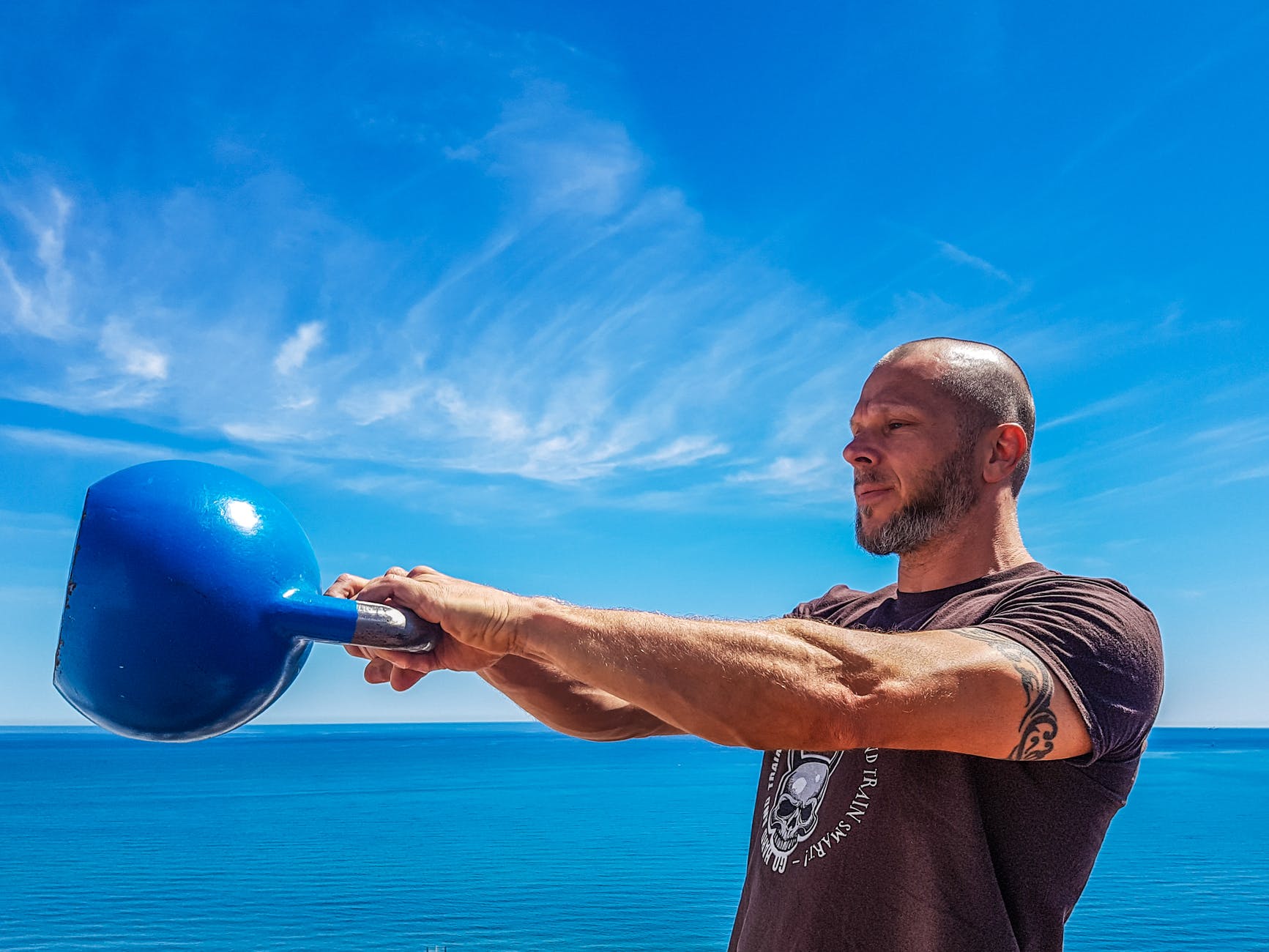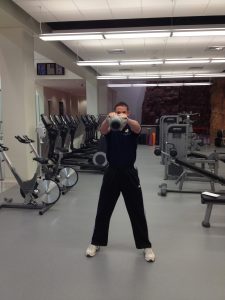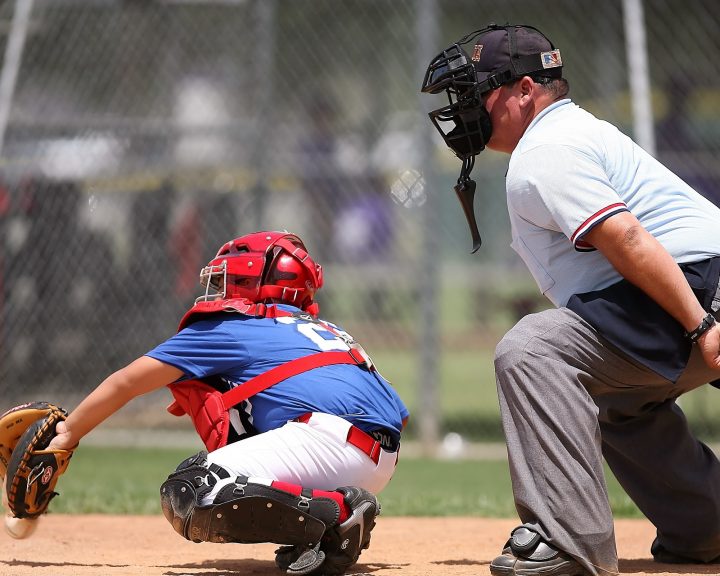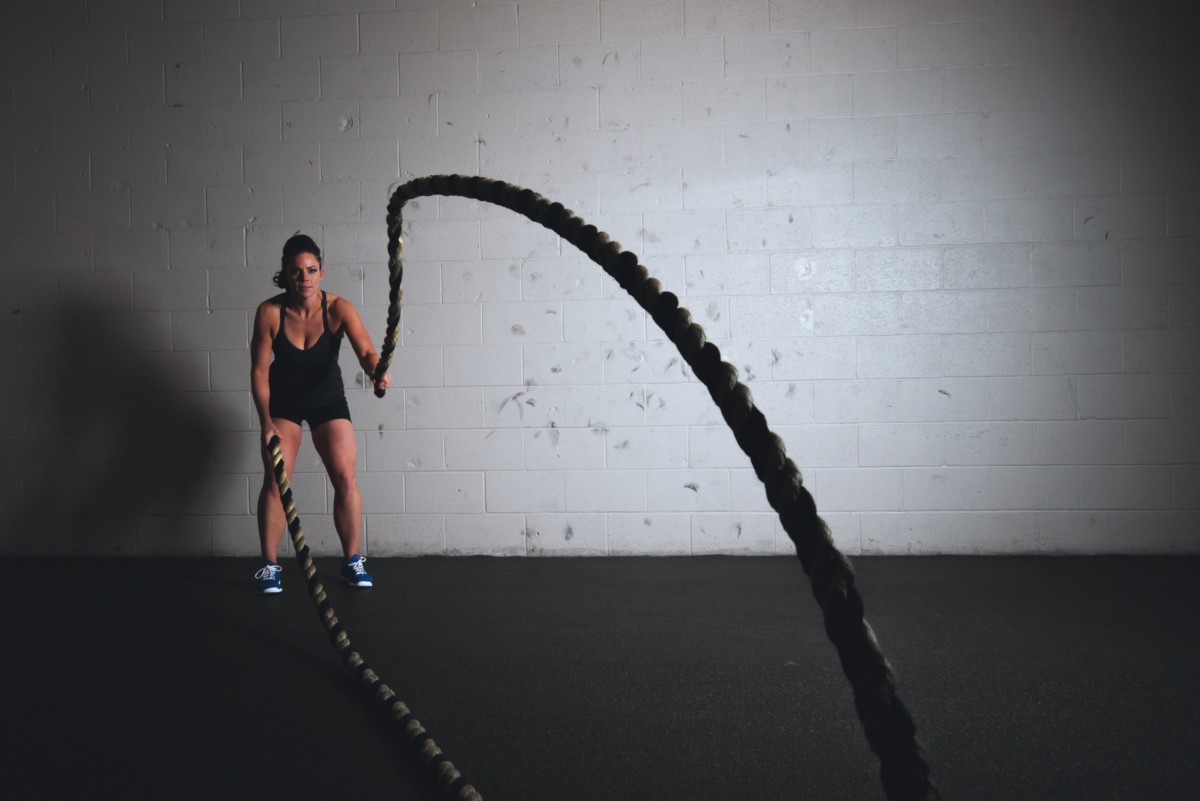The kettlebell swing exercise is one of my favorite exercises for metabolic conditioning, warming up, and even core training. It’s a relatively simple exercise to master, works most of the muscles of the body, is rhythmical in nature, and is conducive to having teams perform the exercise.
Let’s start with how to perform the exercise. This exercise begins with the kettlebell on the ground. Approach the kettlebell and straddle it. I like to have the feet about shoulder-width apart. I realize some people will perform the exercise with their feet a lot wider, but that doesn’t have a lot of transfer to the sport situations that I deal with.
Squat down and grip the kettlebell handle with both hands. Hands should be next to each other, your palms should face your body. Stand up with the kettlebell held in front of your body.
With your chest out and shoulders back, there should be a slight bend in your knees. Keeping your back flat and arms straight, push your hips back (i.e. perform a hip hinge) and allow the kettlebell to swing backwards between your legs.
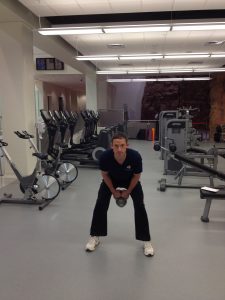
Without pausing, extend your hips and allow the kettlebell to swing up and in front of your body. Allow it to swing until your arms are parallel to the ground and then reverse directions and continue the exercise until either the desired number of reps have been performed or time has expired.
We know from research that the kettlebell swing with the hip hinge is more effective at recruiting the hamstrings than other variations (see Del Monte et al). The core has to brace to perform the exercise. Hips/hamstrings are performing the hinge. Arms and shoulders and chest have a role in controlling the kettlebell.
Because it’s a rhythmical exercise, it can be performed for time. This makes it ideal for metabolic conditioning and warming up.
In addition, this exercise can be combined with other exercises so that it can be used for an entire team’s workout in station work. For example, put three athletes to a station. The first athlete is performing the kettlebell swing. The second is jumping rope. The third is performing a plank. After 30 seconds they switch.
Now, Andersen et al had a great study in the Journal of Strength and Conditioning Research comparing the 1-handed swing to the 2-handed swing. To simplify the results, the one-handed swing is superior at recruiting the erector spinae on the contralateral side and superior at recruiting the rectus abdominis on the ipsilateral side. However, the opposite muscles are not recruited as effectively. This means that when using one-handed swings you need twice the volume (i.e. work both sides) to balance out the effects of the exercise. With that in mind, in a team situation it makes more sense for me to focus on the two-handed variation in order to get the most of out time.
I’m including a video link below to an old video I put on youtube. This is from my garage and is meant to help some of my athletes with how to perform the exercise.
References:
Andersen, V., Fimland, M.S., Gunnarskog, A., Jungard, G-A., Slaittland, R-A., Vraalsen, O.F., and Saeterbakken, A.H. (2016). Core muscle activation in one-armed and two-armed kettlebell swing. Journal of Strength and Conditioning Research, 30(5), 1196-1204.
Del Monte, M.J., Opar, D.A., Timmins, R.G., Ross, J., Keogh, J.W.L., and Lorenzen, C. (2017). Hamstring myoelectrical activity during three different kettlebell swing exercises. Journal of Strength and Conditioning Research, published ahead of print.

